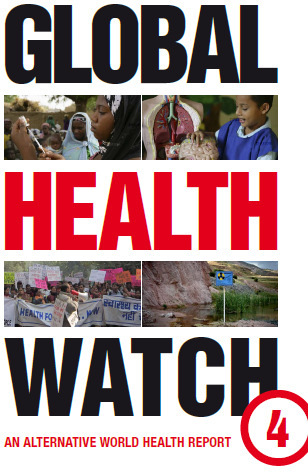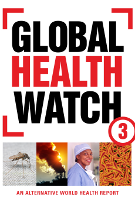MDGs
Current focus
Current focus is on EB130 in Jan 2012. See WHO Watch comment at Agenda item 6.5 (Monitoring the achievement of the health related MDGs and global health goals from 2015).
This agenda item includes three sub items:
- Progress in the achievement of the health-related Millennium Development Goals
- Global health goals after 2015
- Implementation of the recommendations of the Commission on Information and Accountability for Women’s and Children’s Health
Document EB130/13 provides the annual report on the progress supplemented by information on the reduction of perinatal and neonatal mortality and the prevention and treatment of pneumonia with further consideration of next steps towards goal-setting after 2015.
Document EB130/14 provides an account of the actions taken and progress made in the implementation of the recommendations of the 2011 report Keeping Promises, Measuring Results, prepared by the Commission on Information and Accountability for Women’s and Children’s Health.
History and background
In September 2000, at the United Nations Millennium Summit, the 191 member countries in the United Nations agreed to a set of eight Millennium Development Goals for the world’s poor nations. These goals, targeted for fulfillment by 2015, have since become the fulcrum for public policy discussions and actions concerning economic and social development.
Meetings and conferences on the goals under the auspices of the United Nations and the governing bodies of member countries have been held regularly since 2001. The aim of these meetings and conferences has been to reiterate the goals and to reaffirm the commitment of countries to them, as well as to assess the extent to which progress has been made toward their fulfillment.
The UN MDGs website provides reference to the various progress reports and other reports prepared since 2000. See also the WHO topics site on the MDGs.
The United Nations Secretary-General’s Global Strategy for Women’s and Children’s Health, launched in September 2010, called for WHO to coordinate a process to determine the most effective international institutional arrangements for ensuring global reporting, oversight and accountability on women’s and children’s health. In response, the Director-General established the Commission on Information and Accountability for Women’s and Children’s Health. The report of the Commission, of which the advance copy was released during the Sixty-fourth World Health Assembly in May 2011, was officially published during the United Nations General Assembly on 20 September 2011. Document EB130/14 provides an account of the actions taken and progress made in the implementation of the recommendations of the report.
The health related MDGs were considered as Item 4.4 at EB128 in January 2011 and as Item 13.3 at WHA64 in May 2011. Further references are linked from these pages.
Comment
MDGs generally
Most of the Millennium Development Goals may seem at first sight unobjectionable. Nevertheless, they were not the result of an initiative from the South itself, but were pushed primarily by the triad (the United States, Europe, and Japan), and were co-sponsored by the World Bank, the International Monetary Fund, and the Organization for Economic Cooperation and Development.
The focus of the MGDs is on goals and targets and, while there has been criticism of the ways the targets are formulated, there is a general agreement that they represent a good direction in which to aim. However, it is a feature of the MDGs that while there is some degree of consensus on goals and targets, the strategies needed to achieve them are subject to deep conflict. Exploring this in a bit more detail requires recognising intervention-focused (with donor support) and enabling, context changing strategies.
Thus an intervention focus in relation to maternal mortality includes access to skilled birth attendants but the wider context includes a functioning health system to support such attendants and a decent roads network and public transport to access them. An intervention focus in relation to child mortality includes vaccination and integrated care of childhood illness but the wider context again includes a functioning health system, food security and water supply and sanitation. Road, public transport, water supply and sanitation in turn depend upon wider elements of social and economic development. The strategies adopted to achieve the MDGs have relied largely on an intervention focus and donor funding. The global economic and political conditions needed to create the wider context for achieving the MDGs do not attract the same consensus nor the funding. Indeed WHO remains on drip-feed in order to prevent it from drawing to much attention to these conditions.
From a health point of view the strategies for achievement of the MDGs involve addressing the determinants of health and strengthening health systems.
In terms of the determinants of health, WHO recognises that trade relations affect health and argues for deepening policy dialogue between the trade and health sectors to achieve coherence in policy directions. However, the EU and the US seek to choke off WHO's involvement in trade policy through their financing policies (earmarked funding with tight constraints over untied fund) while driving new trade agreements which contain provisions which are likely to be damaging for health. Meanwhile progress in the so-called 'Doha Development Round' has stalled because the rich countries refuse to dismantle agricultural subsidies and protections (with serious implications for food security) while demanding that L&MICs open their markets to rich country manufactured goods (with implications for industrial development and employment).
WHO recognises that improving health calls for reducing economic inequalities and providing decent levels of social protection. Meanwhile the EU and US are driving neoliberal economic and social policies directed to widening inequalities and reducing social protection.
In terms of health systems, the WHO recognises the need for integrated health systems with universal access and a PHC focus. However, the World Bank and IMF are driving a stratified health system model (private for the rich, social insurance for the middle and a low safety net for the poor) leading to horizontal fragmentation and the GFATM is driving vertical fragmentatoin through its disease focused funding. WHO argues for cheaper medicines, national drug policies, essential drug lists and a priority to the quality use of medicines. The USA and EU on the other hand shape their global health policy positions in relation to medicines around the needs of the research based pharmaceutical corporations.
Achieving consensus around goals and targets appears to be a limited achievement when there are such profound differences with respect to fundamental strategy.
See also Samir Amin on the Millennium Development Goals.
The Global Strategy for Women’s and Children’s Health and the Commission on Information and Accountability for Women’s and Children’s Health
The UN Secretary General's 2010 Global strategy for Women's and Children's Health (html version and links to other languages; and English pdf version) included among its recommendations a request to WHO to initiate and support a Commission on Information and Accountability for Women's and Children's health; which reported (Keeping promises measuring results) in 2011.
The 'key elements' of the Global Strategy are listed in the report as:
- Country led health plans (with donor support)
- A comprehensive, integrated package of essential interventions and services
- Integrated care
- Health systems strengthening
- Health workforce capacity building
- Coordinated research and innovation.
The essential interventions include:
- Quality skilled care for women and newborns during and after pregnancy and childbirth (routine as well as emergency care)
- Improved child nutrition and prevention and treatment of major childhood diseases including diarrhoea and pneumonia
- Safe abortion services (where not prohibited by law)
- Comprehensive family planning
- Integrated care for HIV/AIDS (i.e., PMTCT), malaria and other services
The Commission's brief was to consider the information needed to track implementation of the global strategy and results and to ensure accountability of countries and donors. The Commission's report was structured around 10 recommendations dealing with:
- Better information for better results
- Tracking resources for women's and children's health
- Better oversight of results and resources
PHM comment. On the one hand there are grounds for disappointment in that the global strategy is largely focused on specific interventions (rather than the wider enabling and context changing strategies) and the Commission was similarly focused so that the pressure generated from the measurement and accountability recommendations will largely focus at this level.
On the other hand the Commission sets a precedent which could perhaps be used in relation to a range of other health priorities including the various global public private partnerships. The precedent speaks of rigorous identification of data sets and of WHO having a role in promoting accountability of donors as well as countries.




